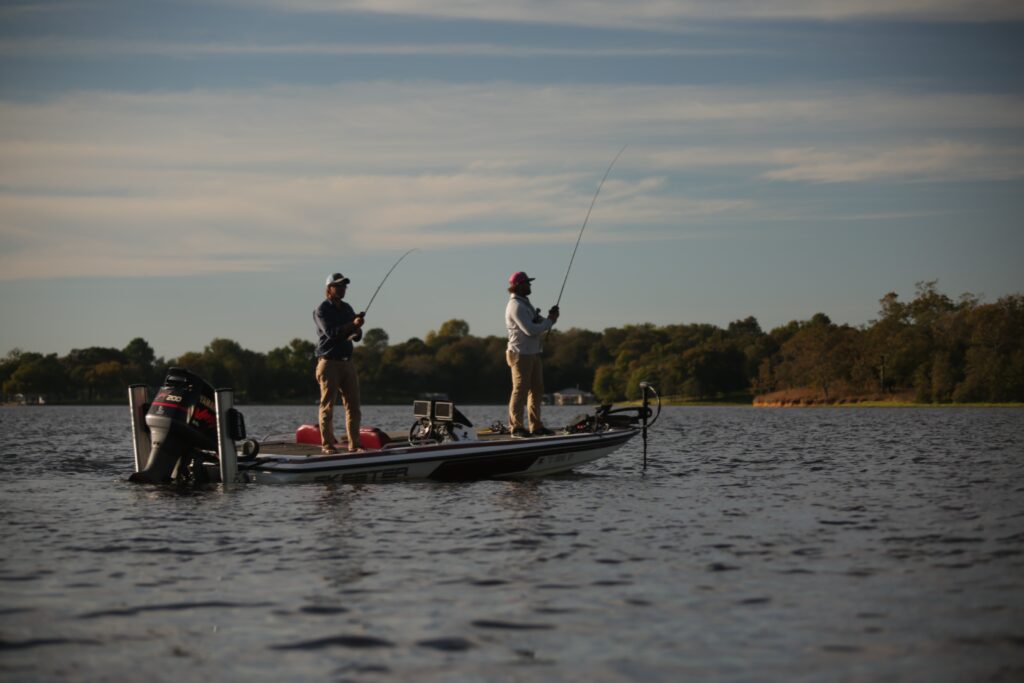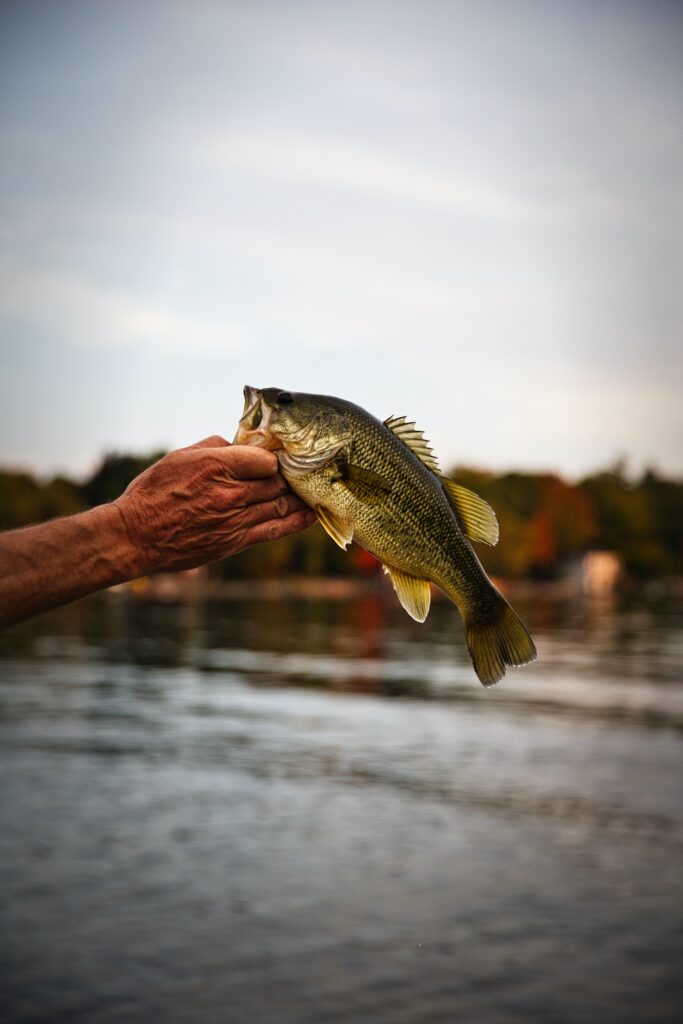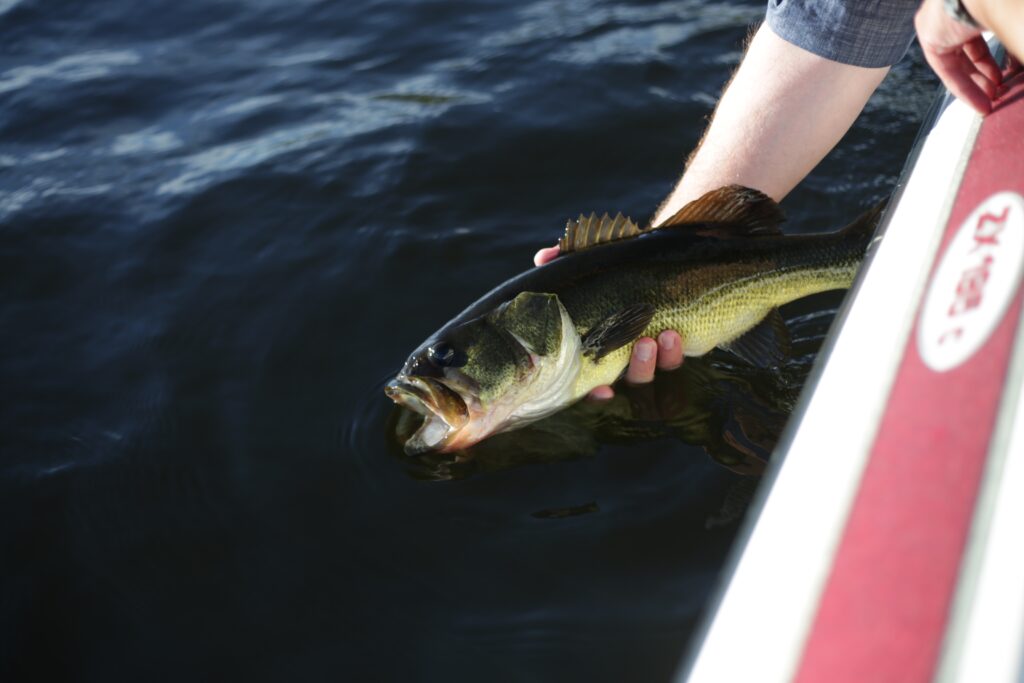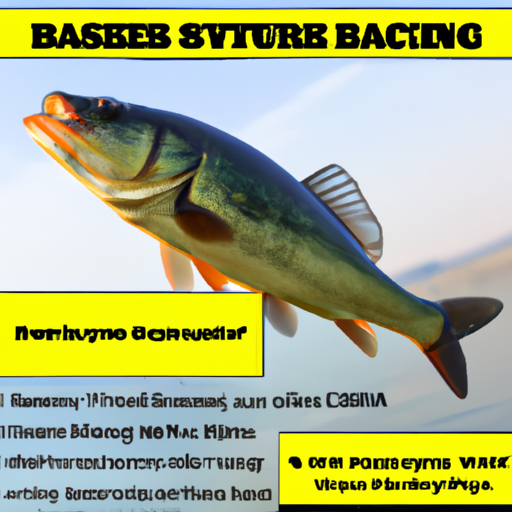If you’re an avid angler and love the thrill of bass fishing, you may be wondering if spring is the ideal time to pursue this popular freshwater sport. Look no further – “Can You Go Bass Fishing In Spring: Essential Tips And Techniques” has got you covered. This comprehensive guide provides invaluable insights and strategies to help you navigate the unique challenges and opportunities that arise during this season. From understanding the behavior of bass in spring to mastering the essential techniques that yield the best results, this article is your go-to resource for a successful and rewarding spring bass fishing experience. Get ready to reel in some trophy-worthy catches!

Best Time to Go Bass Fishing in Spring
Spring is an excellent time for bass fishing, as the warmer weather triggers the fish to become more active after a long winter. However, it’s important to understand the spring bass fishing season and consider several factors before heading out to the water.
Understanding the Spring Bass Fishing Season
The spring bass fishing season typically begins when the water temperature starts to rise above 50 degrees Fahrenheit. As the temperature continues to climb and reaches the mid-60s, bass become more active and start moving to shallow waters for spawning. This is the ideal time to target them, as they are more willing to bite.

Factors to Consider
Before planning your spring bass fishing trip, there are a few important factors to consider. Firstly, it’s crucial to know the water temperature of the body of water you’ll be fishing in. Bass are more likely to be found in shallower areas when the water temperature is between 55 to 65 degrees Fahrenheit.
Additionally, water clarity plays a significant role in bass fishing success. Clear water requires a more subtle and natural presentation, while murky water allows for brighter and more vibrant baits. Monitoring water levels and currents is also essential, as changes in these conditions can impact bass behavior.
Choosing the Right Equipment
Having the right equipment is crucial for a successful bass fishing trip in spring. Let’s dive into some factors to consider when selecting your fishing gear.
Selecting the Ideal Fishing Rod and Reel
When it comes to choosing a fishing rod and reel for spring bass fishing, medium to medium-heavy rods with fast action are the preferred choice. These rods provide the necessary sensitivity to feel the subtle bites and enough power to handle larger bass.
For the reel, a spinning reel is often the go-to option for its versatility and ease of use. Make sure to pair your chosen rod with a reel that has a smooth drag system and a high gear ratio to quickly retrieve and reel in the fish.
Picking the Perfect Fishing Line
The fishing line choice is crucial for bass fishing in spring. Opt for a monofilament or fluorocarbon line with a test ranging from 12 to 17 pounds. These lines offer the right balance of strength and flexibility to handle the aggressive strikes and fight from bass.
Avoid using braided lines in clear water, as they are more visible to the fish. However, braided lines can be useful in heavy cover or thick vegetation, where their superior strength comes in handy.
Essential Tackle and Lures
Having a well-stocked tackle box is essential for spring bass fishing. Here are some must-have lures and tackle to consider:
-
Plastic Worms: Worms in natural colors like green pumpkin or watermelon are go-to baits for spring bass fishing. Texas rig them with a bullet weight and fish them around structure or in shallow grassy areas.
-
Jigs: Jigs imitate crayfish or small baitfish, making them highly effective in spring. Use a slow and steady retrieve to mimic a crawfish or hop the jig along the bottom to entice a strike.
-
Spinnerbaits: Spinnerbaits are versatile lures for spring bass fishing. Choose colors that resemble baitfish, and vary your retrieval speed to find the right presentation that triggers strikes.
-
Crankbaits: Crankbaits are ideal for covering larger areas and finding active fish. Opt for shallow diving crankbaits early in the spring and switch to deeper diving ones as the water warms up.
-
Topwater Lures: Topwater lures, such as frogs or poppers, are exciting to use during the spring. Target areas with vegetation or cover and create enticing surface disturbances to attract bass.
Experiment with different colors and sizes to find what works best for the specific body of water you’re fishing in.

Understanding Bass Behavior in Spring
To increase your chances of a successful spring bass fishing trip, it’s important to have a good understanding of bass behavior during this season.
Spawning Habits of Bass
Spring is the prime spawning season for bass, and understanding their spawning habits can give you an advantage. Male bass typically prepare spawning beds by clearing debris and creating shallow nests. Female bass then enter these nests to lay their eggs, and males guard the eggs until they hatch.
It’s crucial to practice proper catch and release strategies during the spawning season to ensure the survival and future populations of bass.
Identifying Preferred Bass Habitats
Bass prefer specific habitats during the spring, and being able to identify them can help you locate the fish. Look for shallow areas with ample cover, such as fallen trees, vegetation, or rocky structures. These areas provide bass with protection, shade, and a ready food supply.
Paying attention to water temperature and clarity can also help you determine where bass are likely to be. Warmer shallow waters with good visibility are prime areas to find bass during the spring.
Locating Bass Schools
During the spring, bass often gather in schools for spawning and feeding purposes. Look for signs of baitfish activity, such as jumping or splashing, as this can indicate the presence of bass. Covering a larger area and using fish finders or sonar can also help you locate bass schools.
Techniques for Spring Bass Fishing
Now that you understand the behavior and preferences of bass in the spring, let’s explore some effective techniques to catch them.
Casting and Retrieving Techniques
Casting and retrieving is a basic but effective technique for spring bass fishing. Start by casting your lure near the shoreline or structure where bass are likely to be and let it sink. Once it reaches the desired depth, begin a steady retrieve, experimenting with different speeds and pauses to entice a strike.
Vary your retrieval speed and occasionally add twitching or jerking motions to imitate injured or fleeing baitfish. Additionally, consider using a combination of different lures to cover a wider range of water depths and increase your chances of success.
Topwater Fishing Techniques
Topwater fishing can be incredibly exciting during the spring, as bass are more willing to strike at baits on or near the water’s surface. Use lures like frogs, poppers, or buzzbaits and cast them towards areas with vegetation, cover, or overhanging trees.
Create enticing movements by twitching the lure, making it splash or imitate the movements of a wounded or struggling prey. Be patient when using topwater lures, as bass may take a few seconds to strike after they spot the lure.
Bottom Fishing Techniques
Fishing near the bottom can be highly effective in targeting bass during the spring, especially when they are in a post-spawn or feeding phase. Use soft plastic baits like worms, crawfish imitations, or creature baits rigged with a Texas or Carolina rig.
Cast your bait near structures or drop-offs and let it sink to the bottom. Slowly drag or hop the bait along the bottom, imitating a crawfish or injured prey. Pay attention to any subtle movements or tugs on the line, as bass often bite soft plastic baits while they’re on the fall.
Jigging Techniques
Jigging is a versatile technique that can be used in various spring bass fishing scenarios. It involves using a jig bait, usually paired with a soft plastic trailer, to mimic a crawfish or baitfish. Cast the jig towards structures or areas with cover and allow it to sink to the desired depth.
Once the jig reaches the bottom, use a subtle lifting and dropping motion to imitate the natural movement of the lure’s intended prey. Vary the speed and intensity of your jigging action to imitate different prey behaviors and trigger strikes from bass.

Tips for a Successful Spring Bass Fishing Trip
To make the most of your spring bass fishing trip, consider the following tips and strategies.
Researching the Body of Water
Before heading out to fish, take the time to research and gather information about the body of water you plan to fish in. Look for online resources, local fishing reports, or even talk to experienced anglers in the area. Pay attention to recent patterns, water conditions, and any specific regulations or restrictions.
Knowing the Weather and Water Conditions
Being mindful of the weather and water conditions is crucial for spring bass fishing success. Bass are temperature-sensitive fish, so understanding the daily and seasonal temperature fluctuations is important. If a cold front or significant weather change is expected, it could temporarily affect bass behavior.
Additionally, monitor water clarity and levels. Rainfall can impact water levels and increase the current, which can influence bass activity and their preferred feeding areas. Adjust your fishing strategies accordingly to match the prevailing conditions.
Trying Different Retrieval Speeds and Depths
Spring bass fishing can be unpredictable, and bass behavior can vary depending on the day or even the hour. If you’re not getting any bites, don’t be afraid to experiment with different retrieval speeds and depths. Bass may be in a feeding frenzy and prefer a more aggressive retrieve, or they may be sluggish and require a slower presentation.
Switching up your techniques and adapting to changing fish behavior is key to increasing your chances of success.
Using Natural Baits and Artificial Lures Effectively
Both natural baits and artificial lures can be effective for spring bass fishing, depending on the conditions and the preferences of the fish. Live bait such as nightcrawlers, minnows, or crayfish can entice strikes from bass, especially when they are less active.
Artificial lures, on the other hand, offer a wide range of options and can mimic various prey species. Experiment with different colors, sizes, and retrieval techniques to find the combination that works best for the prevailing conditions and fish preferences.
Conservation Practices for Bass Fishing
Conservation practices are crucial for the sustainability of bass populations and the overall health of aquatic ecosystems. Here are a few practices to consider when bass fishing in spring.
Catch and Release Strategies
Practicing catch and release during the spring spawning season ensures that the bass population remains healthy and sustainable. Handle fish carefully, avoiding excessive handling or damage to their delicate gill covers. Use proper fishing gear, such as barbless hooks, to minimize harm to the fish during the catch and release process.
If you do decide to keep some bass for consumption, adhere to local fishing regulations and harvest only what you can consume to reduce waste.
Proper Handling and Unhooking Techniques
When handling bass, wet your hands or use a wet towel to avoid removing their protective slime layer. This slime provides a crucial barrier against infections and diseases. If possible, use a landing net to minimize stress on the fish and avoid injury.
When unhooking the fish, do it quickly and gently, using specialized tools like hook removers or long-nose pliers. If the fish has swallowed the hook deeply, it’s often best to cut the line rather than causing further harm by attempting to remove it.

Safety Precautions for Spring Bass Fishing
While enjoying your spring bass fishing trip, it’s essential to prioritize safety. Consider the following safety precautions to ensure a pleasant and secure experience.
Wearing a Life Jacket
Always wear a properly fitting life jacket when on the water, regardless of your swimming abilities or experience. Accidents can happen unexpectedly, and a life jacket can be a lifesaver in case of a fall or other emergencies.
Informing Others of Your Fishing Plans
Before heading out, inform a family member or friend of your fishing plans. Let them know where you’ll be fishing, when you plan to return, and provide them with contact information if possible. This way, if anything unexpected occurs, someone knows where to find you or can alert authorities if necessary.
Staying Aware of Changing Weather Conditions
Weather conditions can change rapidly, particularly in the spring. Keep an eye on weather forecasts before and during your fishing trip. If heavy rain, thunderstorms, or other severe weather conditions are imminent, it’s best to err on the side of caution and postpone your trip.
Common Mistakes to Avoid
To increase your chances of a successful spring bass fishing trip, avoid these common mistakes.
Failing to Adjust to Changing Bass Behavior
Bass behavior can change frequently, especially in the spring. If your initial approach isn’t producing results, don’t be afraid to switch up your techniques, adjust your presentation, or try different lures. Being adaptable and willing to experiment can greatly improve your chances of success.
Using the Wrong Bait or Technique
Choosing the wrong bait or technique can significantly impact your fishing outcomes. It’s essential to research the specific body of water you’ll be fishing and understand the prevailing bass behavior. Experiment with different baits and techniques to find what works best for the given conditions and fish preferences.
Not Being Patient Enough
Patience is key when it comes to bass fishing, especially in the spring. While some days may result in immediate success, other days may require more time and perseverance. Don’t give up too quickly if the bites aren’t immediate. Be patient, adapt your approach as needed, and allow the fish enough time to respond to your presentation.
Bonus Tips for Spring Bass Fishing
To further enhance your spring bass fishing experience, consider these bonus tips:
Experimenting with Different Colors and Sizes
Bass can be selective when it comes to lure color and size in different conditions. Experiment with various color combinations, such as natural or bright colors, and different lure sizes to gauge what the bass respond best to. Consider matching the color to the water clarity and mimicking the local baitfish or prey species.
Adjusting Your Presentation Based on Water Clarity
Water clarity can significantly affect bass behavior and their ability to spot lures. In clear water, downsize your lures and use more natural looking colors and finesse techniques. In murky or stained water, use brighter lures with larger profiles to create better visibility and vibrations.
Observing Other Wildlife for Clues
Keep an eye out for other wildlife in and around the water, as they can provide valuable clues on bass activity. Look for diving birds, ripples, or disturbances on the water’s surface, as they can indicate the presence of baitfish and active bass. Paying attention to nature’s signposts can lead you to prime fishing spots.
Conclusion
Spring bass fishing offers an exciting and rewarding experience for anglers of all skill levels. By understanding the spring bass fishing season, considering various factors, choosing the right equipment, and employing effective techniques, you can increase your chances of a successful trip.
Remember to prioritize conservation practices, practice catch and release, and handle fish with care to ensure the sustainability of bass populations. Take necessary safety precautions, avoid common mistakes, and be patient when facing challenging days on the water.
With the right knowledge, preparation, and a bit of luck, your spring bass fishing adventure can be filled with memorable catches and unforgettable experiences. Get out there, enjoy the beauty of nature, and create lasting memories while reeling in those elusive bass. Happy fishing!





